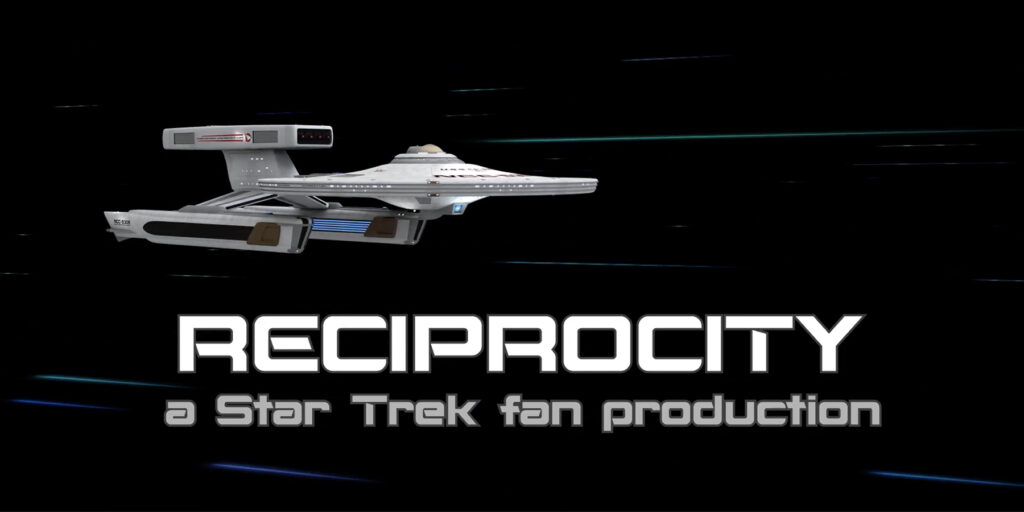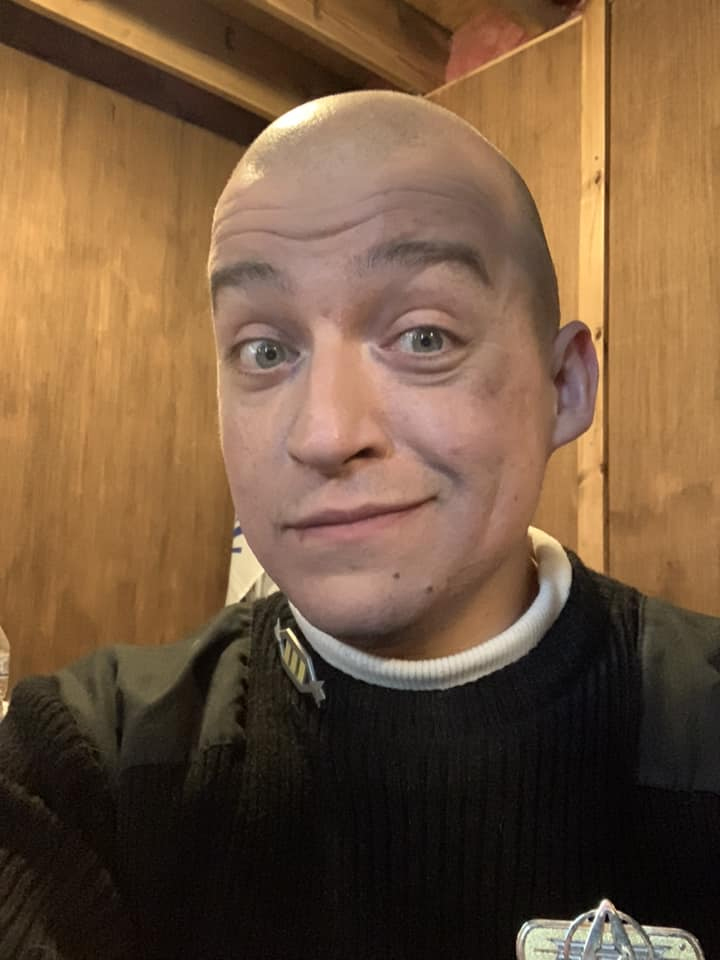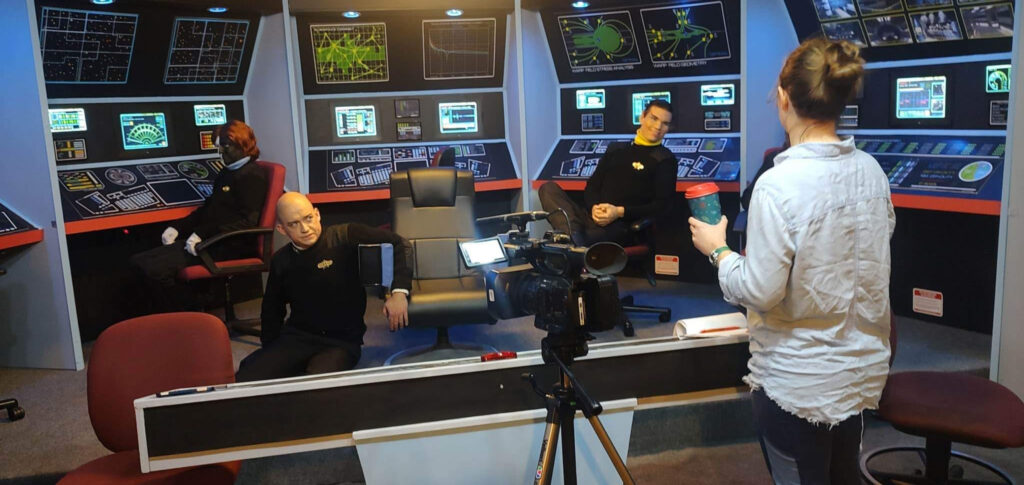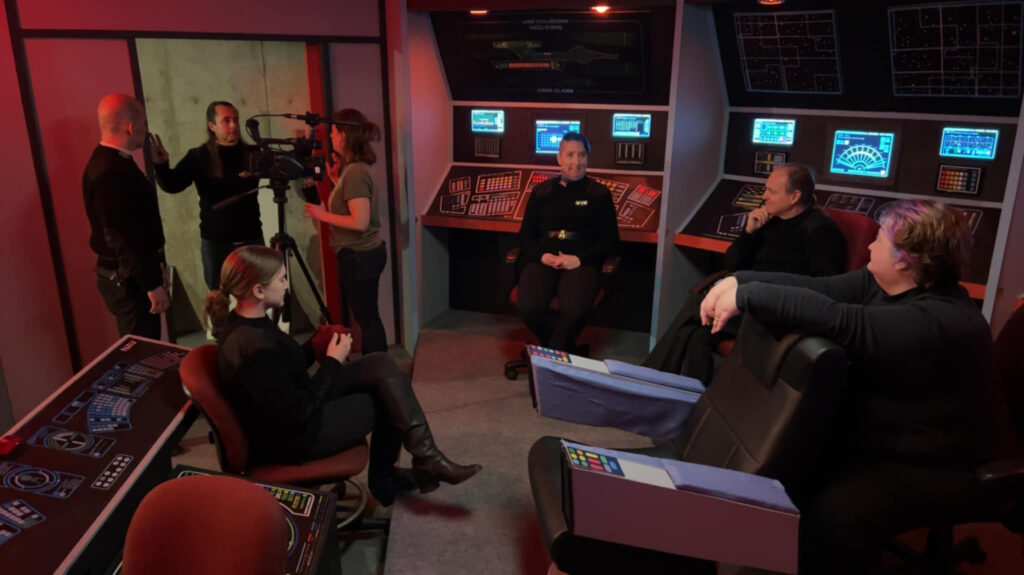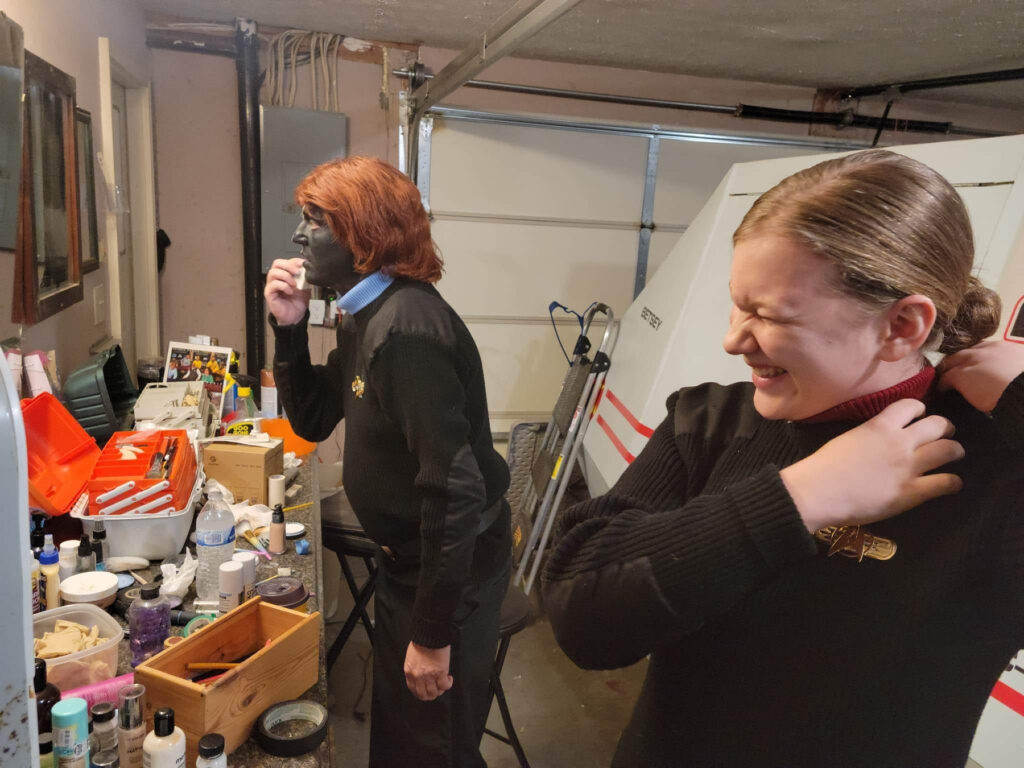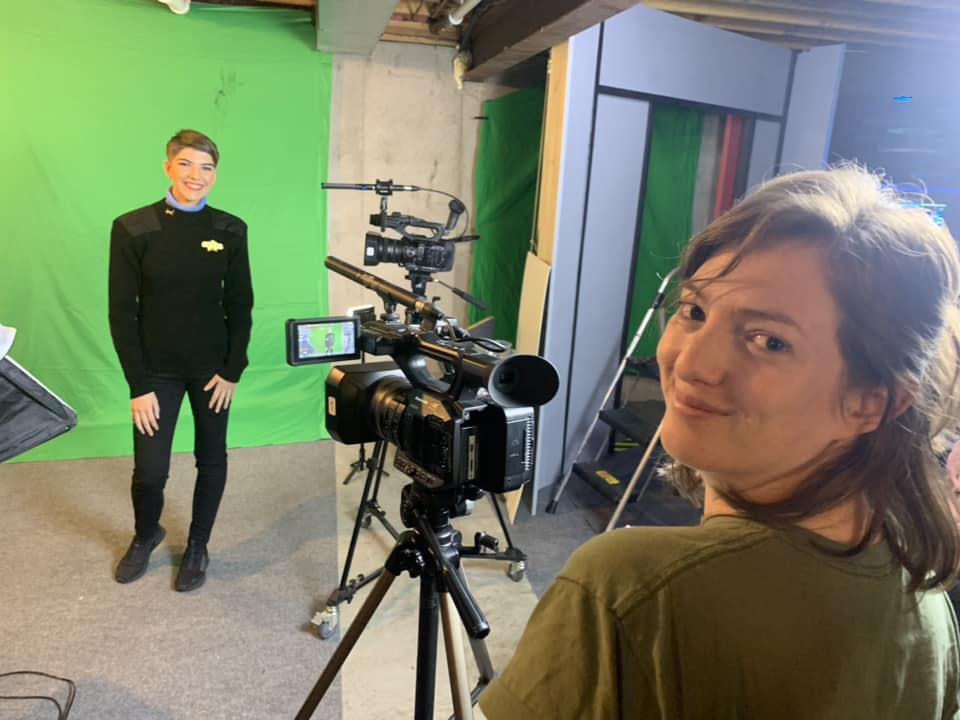Certain states have become nexuses of fan film production: Arkansas, Georgia, and now Kentucky. Of course, it helps when those states contain studios with permanent sets like WARP 66 STUDIOS (Arkansas), NEUTRAL ZONE STUDIOS (Georgia), and POTEMKIN PICTURES (Kentucky). In the case of the latter, three different creative groups are now in active production of Star Trek fan films: STARSHIP WEBSTER, KLINGON SCOUT SHIP QAB’ELTH, and STARSHIP CALIBORN. All three rely on the talents and hard work of fans and friends mostly living in the areas in and around Lexington, KY, coordinated by the efforts of Potemkin Pictures Poobah RANDY LANDERS. (You can view all of Potemkin‘s many dozens of releases from a dozen different creative groups on their website.)
So when I saw a new release from the Caliborn folks, “RECIPROCITY,” I reached out to Randy, as I typically do, for some background on this latest effort. And that’s when Randy recommended that I speak with episode writer and lead actor BILLY SWANSON, as he is the “voice” of Caliborn.
Well, far be it from me not to speak directly with the “voice”! So I reached out to Billy for a quick interview, which appears below. But first, let’s take a look at “Reciprocity”…
And now, here’s Billy…
JONATHAN – Randy said that you are now the “voice” of Caliborn. Does that mean you are officially the showrunner?
BILLY – Yeah, I saw that! I am indeed the showrunner for Caliborn.
JONATHAN – So what does being a showrunner entail for you specifically, Billy?
BILLY – As showrunner, I work with Randy to arrange the chapters (films) accordingly and set up the space to shoot (ha!). Being the showrunner puts me in the position to guide the tone of the overall “volume” (of chapters) that the various films fit into.
When Randy and I decide on a script, I then run it past ROBIN KUNKEL and ANDREW ORTWEIN for their ideas regarding shot composition and what other unique ways we can film. Andrew has a great mind for storyboarding and lighting, as well as ways to accomplish more unique shots! Robin is also a hell of a photographer and broaches the script with a different perspective I enjoy in terms of reasonably scheduling the order of the shots we need, the shots we would like, and the nice-to-have-but-not-a-priority shots, so that we can fit all of that into a reasonable day’s shoot for the actors.
The feedback from this team also helps with initial rewrites to help with narrative and vocal flow for us to present to the actor, to mitigate day-of troubleshooting. It is a lot like Randy’s shot lists, but with more technology and fun pictures! I also facilitate the shoot crew and work with the production team to prepare for the next chapter (storyboarding, lighting, costume, and directing).
JONATHAN – Are you writing all of the scripts entirely by yourself, or is that task shared among several writers?
BILLY – At this moment, I am writing all the chapters/episodes. A few of the earlier ones are scripts that Randy and I punched up just to ensure they got produced, but within that, I balance that to help tell the overall story of the Starship Caliborn. Fan films are always about collaborating with those who want to create! So I always have an ear to the ground for submissions and the like. DANIEL RHODES has a wonderfully creative mind, and I’m typing up something a little different to incorporate his feedback and to shake things up a bit!
JONATHAN – What goes into the preparation for a shoot?
BILLY – Due to scheduling, we have a good idea of the order of things and how we want to proceed in production with it. That is where we get the aforementioned storyboards and shot lists prepared when we have that time. Sometimes we have to adapt and roll with what we can shoot with who we have, and that is part of the fun, guerilla nature of shooting these sometimes.
JONATHAN – And what happens on the actual filming days?
BILLY – The average shoot usually starts around 10am, and folk will get into wardrobe and make-up. Typically, while that happens, the production staff set up the cameras and arrange the shots, and that is also when people will line-bash the script for the first scene on the docket. Klingon days are way more make-up intensive, but on a standard Starfleet shoot, we can get going fairly quickly depending on the blocking and what the director, et. al. want with the first shot. We’ll run until around noon or 1 and have a lunch break that lasts at least 30 minutes. Randy and Linda are always very kind in providing lunch for the long shoots, and that can be a classic pizza party, sammies, or even delicious chili.
We try to be efficient with our time to wrap around 4:30 on a shoot day, but sometimes we get the fever and can go until around 5-something. It all really depends on the level of progress/completion and the overall energy that’s left at that point. Each film is unique with the challenges they have for the day, so I would say this is where the phrase “typical” ends. We have a wonderful team that really puts the love into each production, and it makes it that much more special when it all comes together.
JONATHAN – What is it like as an actor shooting scenes on those Potemkin Pictures sets?
BILLY – It really depends on the individual performer and what is being called for in the scene and how we are shooting it. I really loved what MAT ACRA was doing with Taer [the science officer from Cheron -Jonathan], and I wanted to challenge him to run with the character and really shine. Part of that was getting Mat both in makeup and then in the mood to be ensorcelled by a space entity. And the other challenge was the wonderful photography that asked many takes of Mat from many different angles and lights. He is always a good sport, and I think that care in filming really shows in “Reciprocity.” It is warm as hell sometimes in those sweaters, but one must suffer for their art!
In terms of filming and takes, even if someone is not off book, we keep it loose enough to get them up to speed in a natural way. Sometimes our best takes were things caught on the fly, and that is really true of so many films, where a riff was one of the most enduring moments.
JONATHAN – Unlike the other actors, you’re also the writer. What is it like for you to hand your script over to someone else to direct while you play the lead role? Do you ever find yourself wanting to direct the director?
BILLY – Never direct the director! As a writer, it is then in their hands, and it is on me as a performer to nail how I intended it to read for Hawk.
Playing the lead role? Is Hawkins the lead? Part of me says, “Hell, yeah! I’m living the dream!” and the other part of me is very conscious in telling a story of the crew, and I posit that there might be a trend with the captain’s chair since day one. We do try to be deliberate in these stories with the big things but maybe some little things too…things to consider for the viewers.
I came up in dramaturgy, and having worked with some difficult writers in the past, I garnered a healthy respect of walking away as the writer once something is complete and in the hands of the production team. I trust my team to take their artful skills and make the writing even more whole for the actors and post-production team to then ply their craft and present the film. Working on our upcoming chapter “EMPYREAN” came from an interesting place for me as a writer, and to see how people then interpreted it and made it even more impactful is one of the greatest gifts I have received as a “creator.” The team made something beautiful, and a lot of tears were shed that day.
JONATHAN – And finally, what’s coming up for Starship Caliborn? How much has been shot already, what’s still to film, and how long do these episodes usually take to finish in post?
BILLY – We are still chipping away at completing Volume 1, with one film in post production, one in shooting, and about four more to round out our first volume. The post-production turnaround time depends on the level of VFX we have in the film, which is why when there are big VFX-heavy moments, I make sure to reach out to Randy and ROSS TROWBRIDGE about the design for the VFX well before we start shooting to cut down on the time of completion. Tough to really speak to an average time as so many different things go into each one, and there are some big moments ahead with a lot of phasers and torpedoes (of course)!
JONATHAN – Well, I can’t wait to see what’s coming up, Billy!

